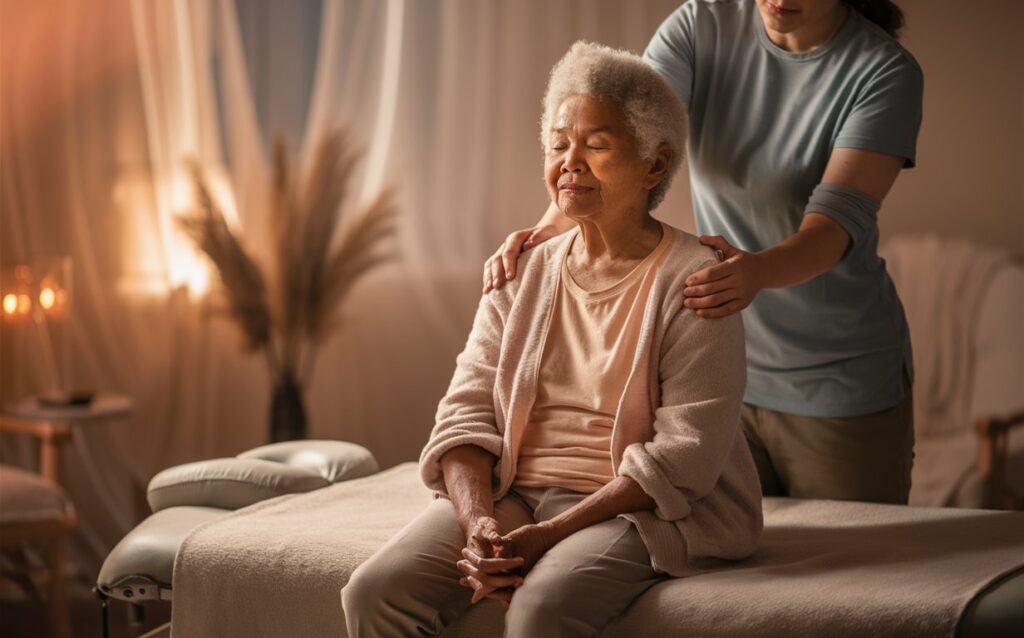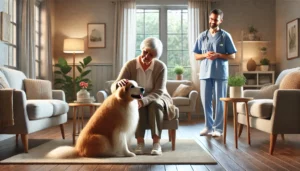Massage therapy is a pivotal component of holistic health practices, especially beneficial for the elderly population. This therapeutic approach not only relieves physical ailments but also offers profound benefits for mental and emotional well-being. As a Naturopathic Doctor specializing in natural health, I have seen how massage therapy can significantly improve the quality of life for seniors by integrating physical touch with caring support.
Types of Massage: Tailoring Techniques to Elderly Needs
Elderly patients have unique needs that require specific massage techniques. Here are some of the most beneficial types:
- Swedish Massage: Utilizes gentle strokes to increase blood circulation, reduce muscle tension, and promote relaxation.
- Deep Tissue Massage: Targets deeper layers of muscle and connective tissue, helping with chronic pain areas.
- Aromatherapy Massage: Combines the soft touches of massage with essential oils to enhance the therapeutic benefits, particularly effective for reducing stress and anxiety.
- Reflexology: Focuses on pressure points in the feet, hands, and ears, linking to various organ systems, ideal for improving overall organ function.
- Chair Massage: A practical method for those with mobility issues, focusing on the upper body to relieve tension.
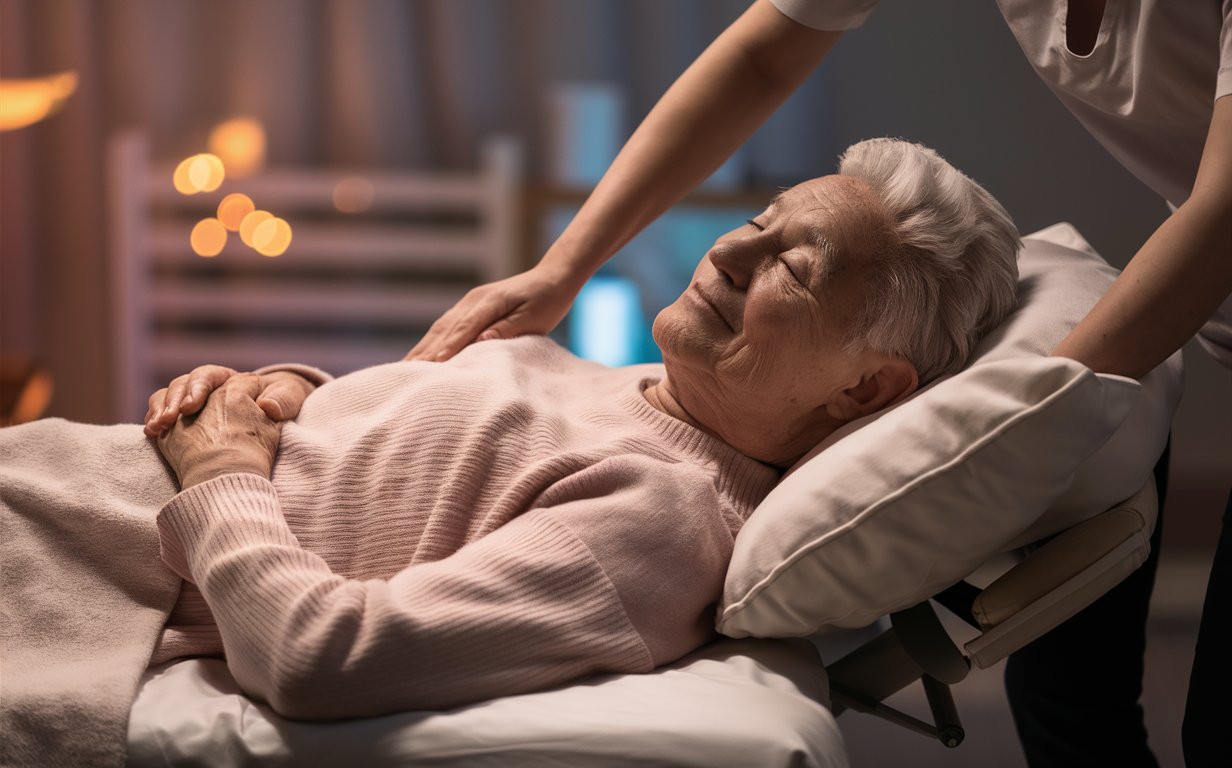
Benefits: Enhancing Physical and Mental Health
The benefits of massage therapy for the elderly are extensive, impacting both physical and mental health:
- Improved Mobility and Flexibility: Regular massage helps loosen tight muscles and joints, which is crucial for maintaining mobility.
- Enhanced Circulation: Techniques like Swedish massage improve blood flow, which is essential for healing and maintaining organ function.
- Pain Relief: Massage can significantly reduce pain from conditions such as arthritis, neuropathy, and other chronic ailments.
- Stress Reduction: The relaxing effect of massage can decrease cortisol levels, thus reducing stress.
- Better Sleep: The relaxation from massage therapy often leads to improved sleep patterns, which is vital for the elderly.
Understand the critical role of social connections in senior care. Read more about our strategies on the Social Well-Being in Holistic Care page.
Practical Implementation: Integrating Massage into Care Schedules
Many care homes have recognized the value of massage therapy and integrated it into their regular care schedules. It is typically offered as part of a comprehensive care plan, with sessions tailored to individual needs and health conditions. Regular assessments ensure that the therapy continues to meet the evolving needs of each senior.
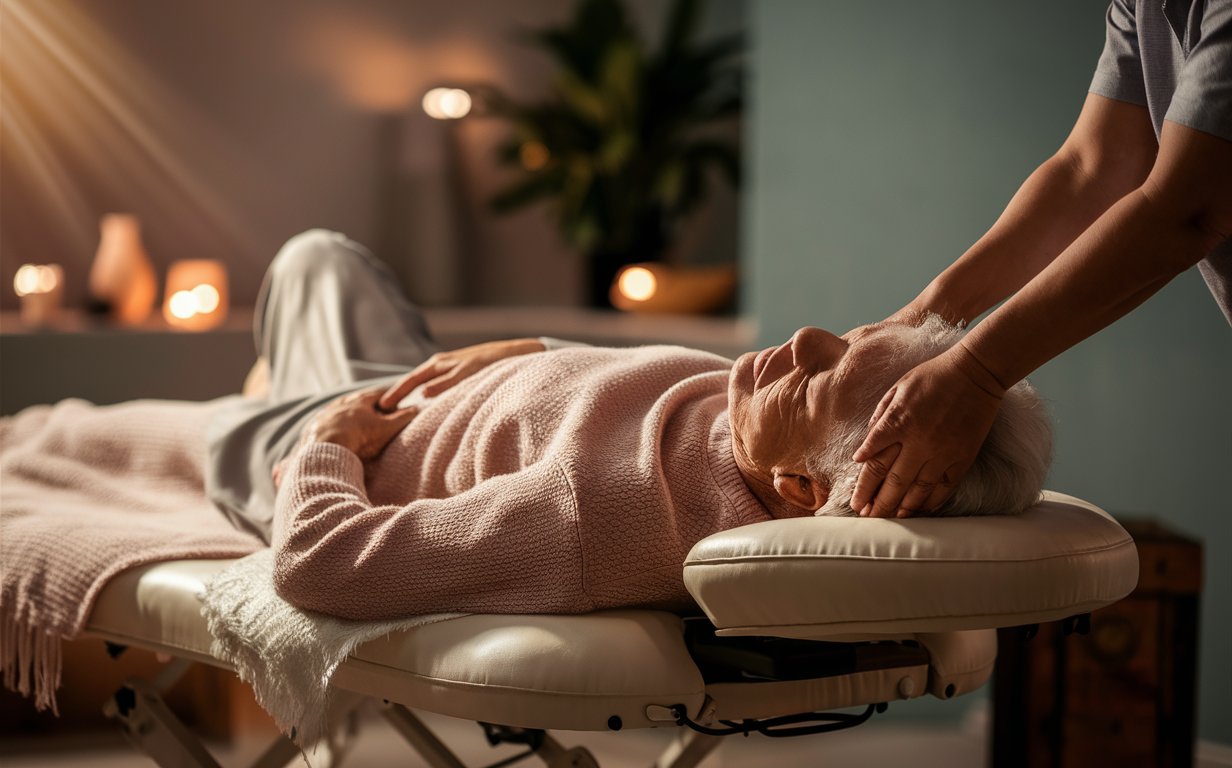
Personal Stories: Testimonials on the Impact of Massage Therapy
One of the most compelling aspects of massage therapy is the firsthand accounts of its impact. For example, an 82-year-old resident in a senior care facility reported significant relief from shoulder pain and improved sleep after starting weekly Swedish massage sessions. Caregivers also notice improvements in seniors’ moods and overall disposition, which they attribute to the regular, comforting touch and interaction during massage sessions.
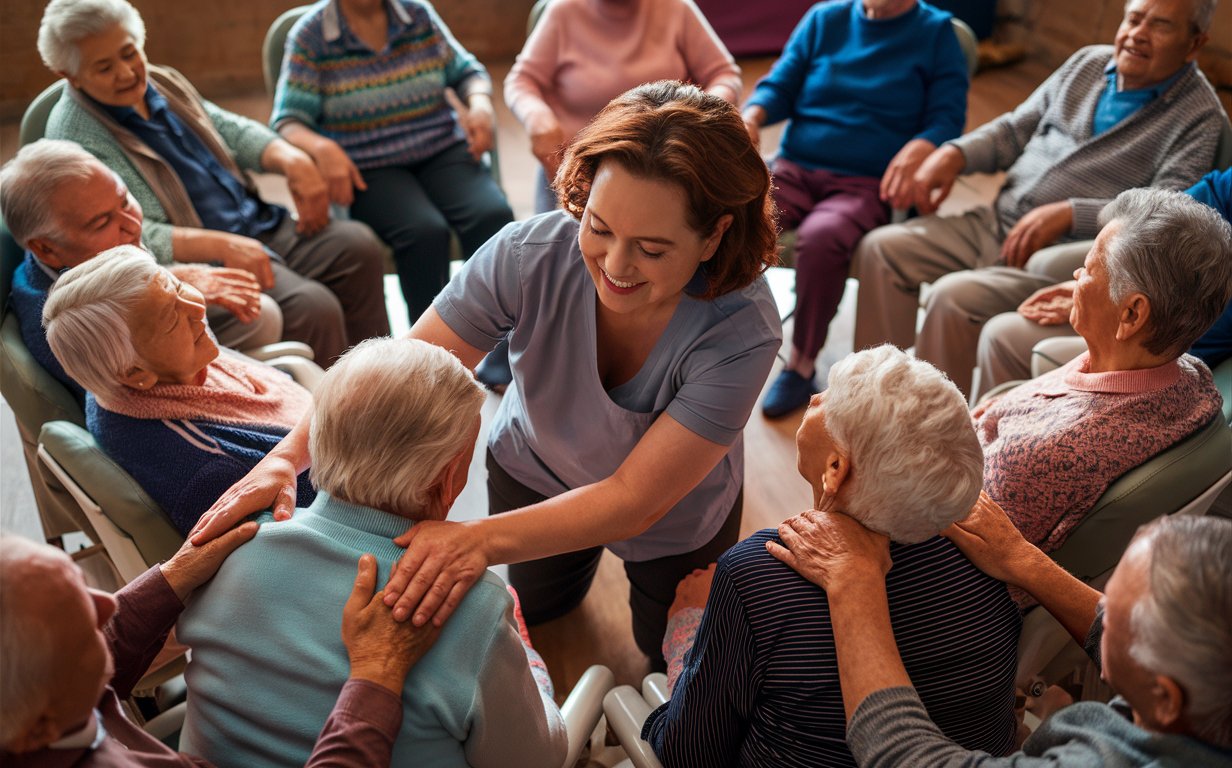
Frequently Asked Questions
How often should seniors receive massage therapy?
The frequency of massage therapy can vary depending on the individual’s health status, preferences, and the specific goals of the treatment. Generally, a weekly session is beneficial for maintaining general well-being and managing chronic conditions. However, for more intensive needs, such as significant pain relief or acute issues, sessions might be recommended more frequently, such as twice a week.
Are there any contraindications for massage therapy in the elderly?
Yes, there are certain conditions where massage therapy might be contraindicated or require modification. These include:
- Severe osteoporosis or bone fragility
- Recent fractures or surgeries
- Severe cardiovascular conditions
- Skin infections or open wounds
- Acute illness or fever
It’s crucial to consult with a healthcare provider before starting any new treatment plan to ensure safety and appropriateness.
What should seniors expect during their first massage session?
During their first session, seniors can expect to have a detailed discussion with the massage therapist about their medical history, areas of pain, and specific health concerns. The therapist will explain the process and what to expect during the massage. Seniors should communicate their comfort levels throughout the session, especially regarding pressure and areas of focus. The goal is to ensure comfort and safety while providing therapeutic benefits.
How can caregivers ensure that massage therapy is safe for elderly patients?
Caregivers can ensure safety by choosing a qualified and experienced therapist who is trained in working with elderly populations. It’s important to inform the therapist about all health conditions, medications, and any concerns before the session begins. Monitoring the senior’s response to massage and maintaining open communication with the therapist can also help manage any potential risks.
Can massage therapy replace other forms of medical treatment?
Massage therapy is typically used as a complementary treatment rather than a replacement for medical treatment. It can enhance the effectiveness of medical care by relieving symptoms and improving quality of life, but it should not replace prescribed medical treatments. Always consult healthcare professionals to understand how massage therapy can best support existing medical treatments.
What are the best practices for introducing massage therapy to elderly individuals unfamiliar with it?
Introducing massage therapy gently is key. Start with shorter, less intensive sessions to allow the individual to become accustomed to the experience. Ensure the therapy environment is comfortable, with appropriate temperature and privacy. Encouraging open communication during the session can help the therapist adjust techniques and approaches to suit the senior’s comfort and health needs.
Conclusion: Embracing the Healing Touch of Massage
Massage therapy plays a crucial role in enhancing the well-being of the elderly, offering a holistic approach that benefits the body, mind, and spirit. It is an essential part of elderly care that can transform the daily lives of seniors, providing comfort, pain relief, and a sense of peace. As healthcare professionals, incorporating massage therapy into holistic wellness programs for the elderly is not just beneficial—it’s imperative for promoting a higher quality of life.
Get to know the dedicated professionals who make Martha’s Vineyard a haven for seniors seeking exceptional care at HEALED Care Home.

